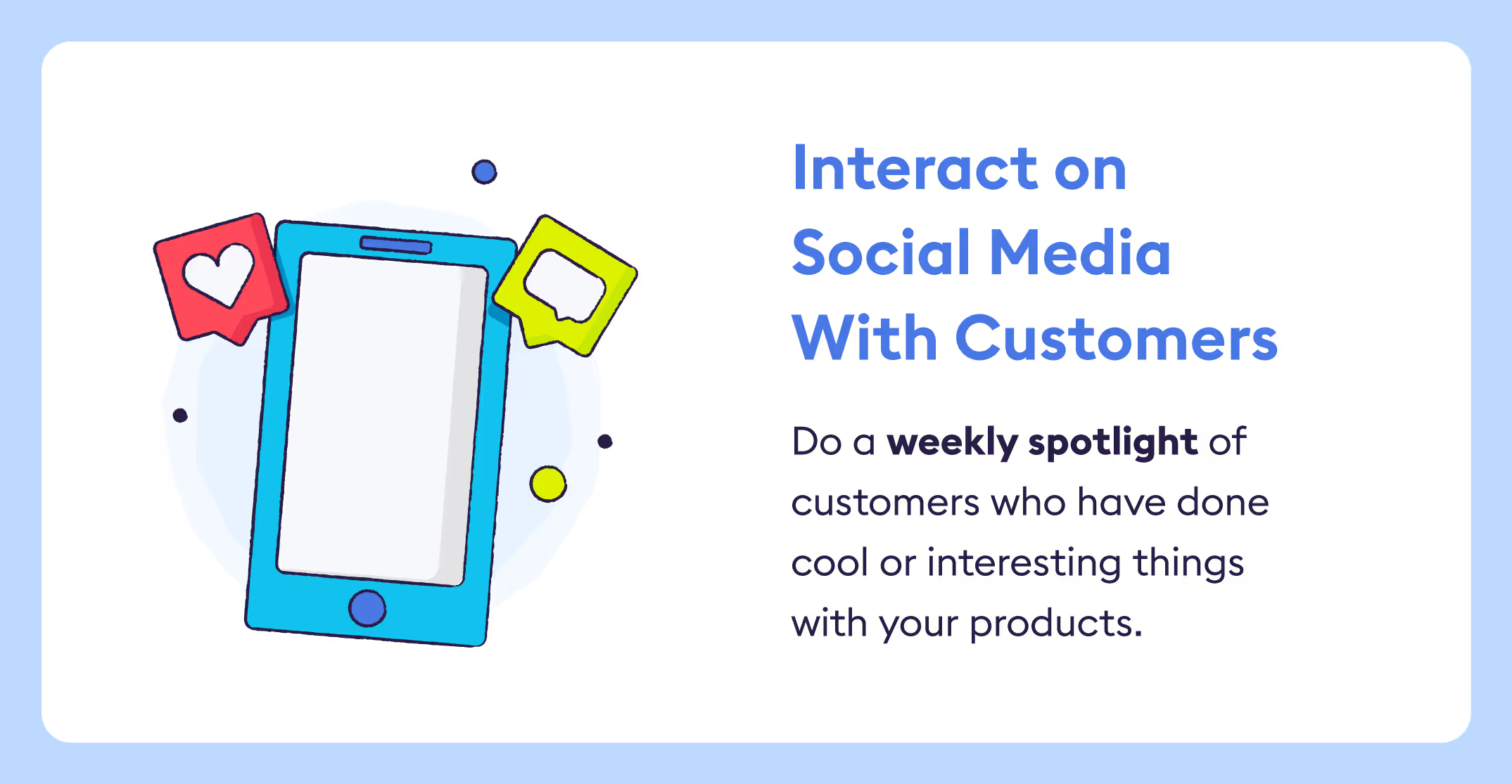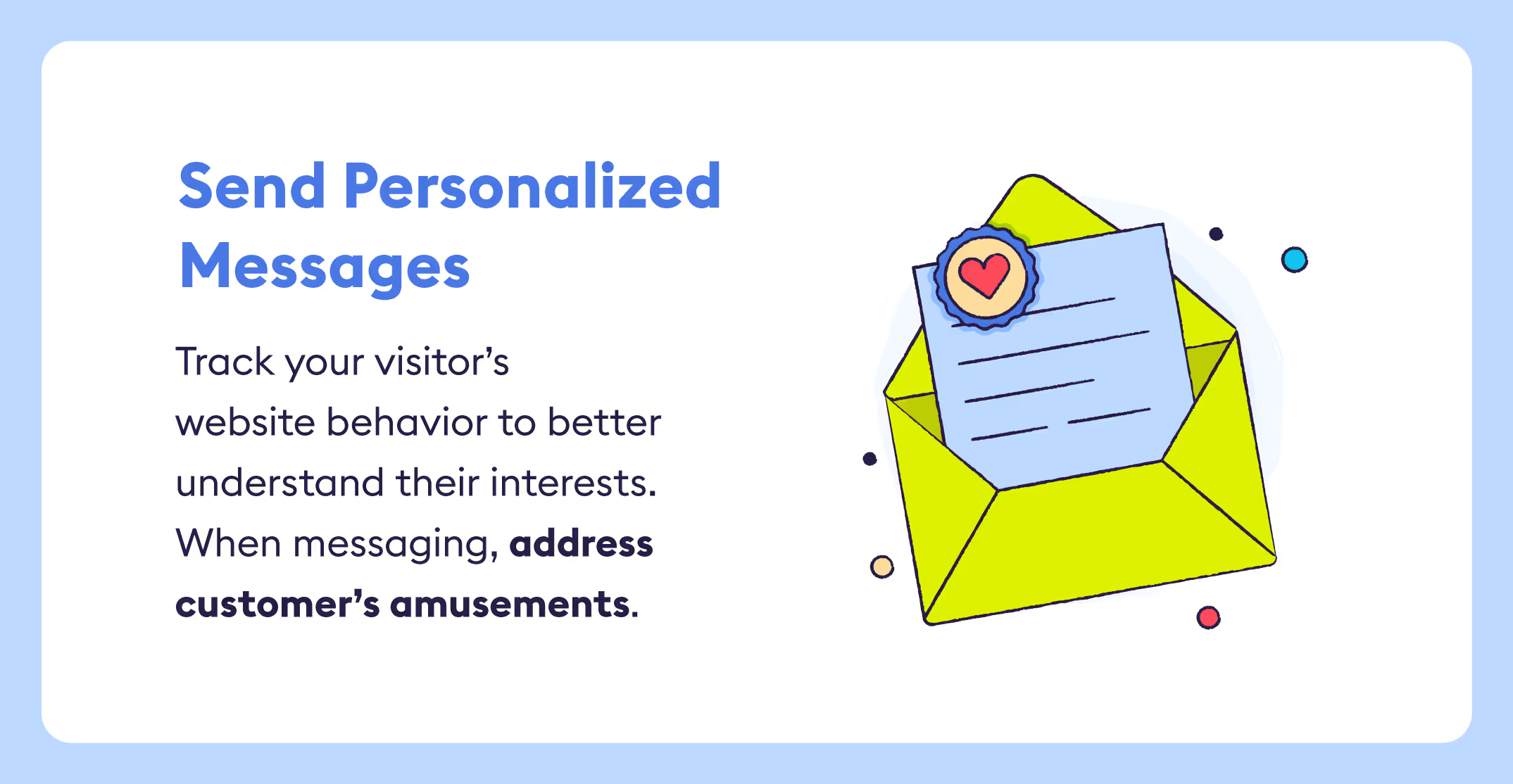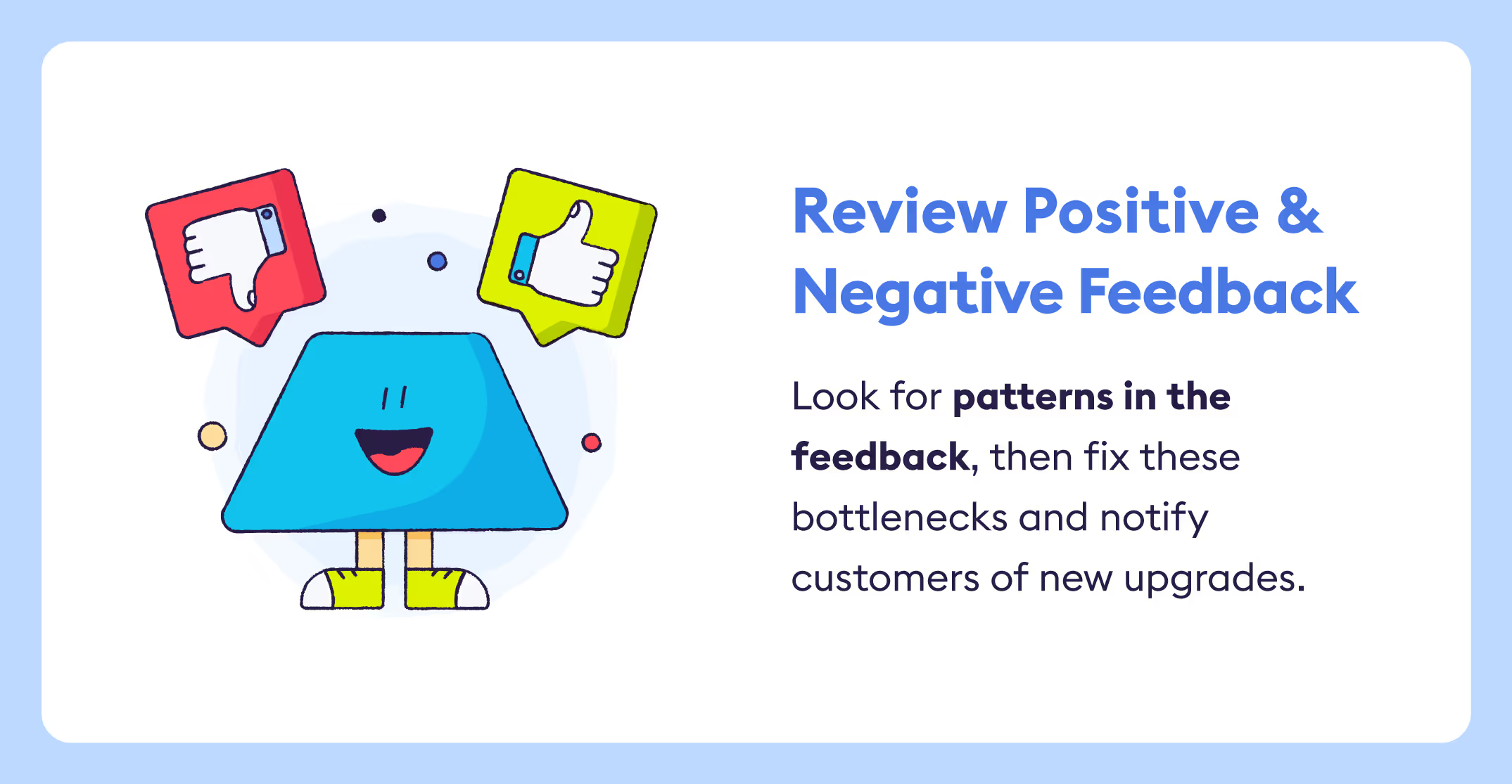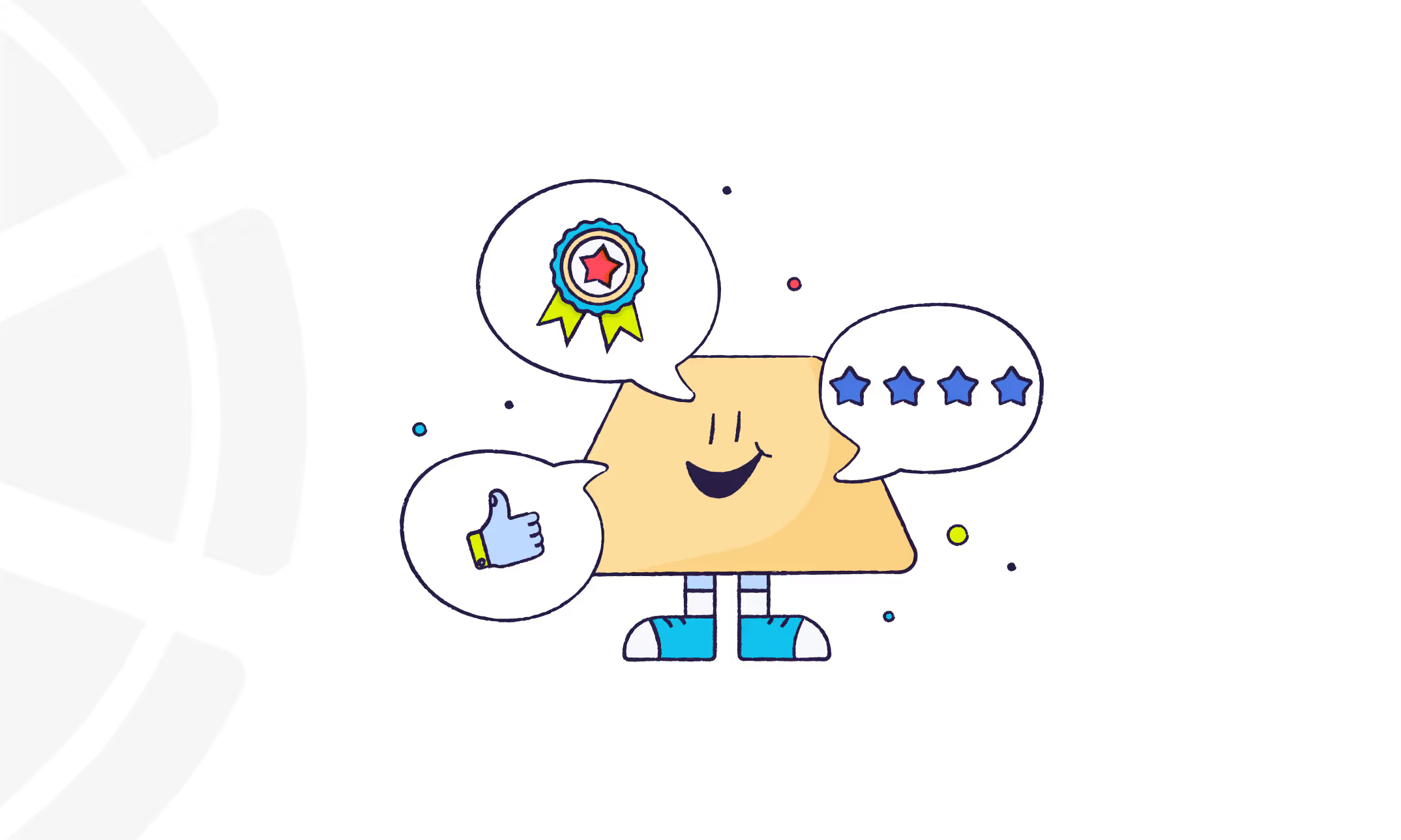Measuring customer satisfaction is an integral part of the customer journey. If your customers are satisfied and happy with your product or service, they will likely become repeat customers. Clients who have a negative experience will likely churn. Even worse, they might share their negative experiences with others online or with friends and family.
Therefore, part of a well-run customer experience is working to keep all customers satisfied. If you aren’t attempting to improve your customer satisfaction, your competitors most certainly are — making it easier for consumers to shift brand loyalty. The 19 strategies below will help improve your customer satisfaction, which in turn will help retain clients and bolster your brand’s reputation.
Before Even Receiving Feedback, Try to Please the Customer
In general, no one likes waiting in the queue. Customers get especially annoyed if they have to wait for a representative. Here are several ways to reduce wait times and quickly address customers’ needs.
1. Provide Omnichannel or Multichannel Support
“Every piece of the consumer’s experience should be consistent and complementary. People use multiple devices during a single transaction process. Make sure that you can listen and respond to these interactions.” — Paige Arnof-Fenn, Founder and CEO, Mavens and Moguls

Multichannel support allows customers to choose an interaction method that is most convenient for them. For example, if a customer has a straightforward question, a simple SMS communication or a live chat channel, through Dixa, with a customer service representative will. For more in-depth or detailed questions, allow for emailed tickets or phone calls depending on a customer’s preferences.
Omnichannel support takes the multiple different channels and allows the customer to be easily transferred between different channels. A prime example is when an issue becomes more complex than originally believed. Omnichannel support allows for a customer to seamlessly access integrated channels, e.g., going from a live chat to a phone call without obstacles.
2. Take Advantage of Customers Mistakes
Customers are people too, and they often make mistakes. Perhaps they misordered an item or forgot to enter a promo code during checkout. Use a customer’s mistake as an opportunity to create a memorable solution.
Some ideas include:
- Writing a personalized note acknowledging the mistake and stating a recent trivial mistake you made
- Sending prepaid packaging slips and postage for seamless returns after misorders
- Include a discount code for a new product or different service
3. Strategize Wait Times and Tickets
Even though you want to respond as quickly as possible, it’s nearly impossible to hire enough customer service representatives to answer client issues 24/7 — particularly if you’re a small-to-medium business trying to scale.
Therefore, be strategic about the order in which your team deals with tickets. For example, if a customer’s demo quits working or has major issues, this issue should be dealt with immediately, while someone who has a general question about your product can be placed in the queue. You want to prioritize the demo issue first for several reasons. First, the customer using a demo is further down the marketing funnel and more likely to purchase the product. And second, a demo issue might not be an isolated incident and could be affecting other demo users.
To better strategize and streamline customer tickets, consider implementing a customer management system (CMS) and customer relationship management (CRM) software.
4. Respond Often on Social Media

Your social media should be fairly active and on a reliable schedule for your customers. Due to the nature of social media, prospective customers and current clients will interact with your social media accounts. These interactions can be both positive and negative. Regardless of the sentiment, make sure you are constantly interacting with customers politely and professionally. If complaints or issues arise, make sure they get quickly addressed and resolved.
YouTube, Facebook, Instagram, and Twitter all make it fairly easy to track changes in customer sentiment and behavior. However, using tools such as Hootsuite or Sprout Social can help with scheduling and double-checking all notifications get resolved.
5. Have an Easy Refund Process
“Always ensure that the refund process is easiest of all.” — Will Cannon, Founder, Uplead
Have a straightforward and lenient refund policy. Typically, you want to offer a money-back guarantee to consumers to retain high trust levels. Therefore, you should have a clear and forward refund policy that is digestible for the average consumer. In your refund policy, write in bullet-point format with quick sentences.
Leave all legal jargon and detailed information on your FAQ or terms and conditions landing pages. By having a clear refund policy, consumers will be more willing to purchase from you due to feeling more secure and being less at risk than with other companies or competitors.
During Engagement, Consider When to Personalize
There seems to be an arms race for personalization between companies. Yes, personalization is necessary to meet the growing demands of today’s consumers and customers, but be cognizant about personalization. Even though the intent is in the right place, execution can be problematic and can come off as inauthentic or troubling.
6. Treat Customers as VIPs
“The well-designed, personalized customer onboarding process is key to customer success... during the personalized onboarding process, recognize clients' needs and individual goals. Work to offer a customized approach and therefore a more satisfying customer service experience.” — Olek Potrykus, Head of Customer Success, Tidio
When working on an issue with a customer, make them feel as if they are the only person that matters at that moment. Part of this process means actively listening to customers by understanding the issue at hand and bearing in mind that they might not know the correct terminology or how to eloquently express their predicament.
Equally as important, during the onboarding process, make sure you recognize the customer’s needs and thoroughly answer all of their questions. This initial interaction can be a make or break for retaining or losing a customer.
Make customers feel better heard by implementing these simple tactics:
- Use their first name
- If talking on the phone, allow for a pause once the customer finishes speaking
- After an issue is resolved, ask the customer if there is anything else you can personally help with today
7. Send Personalized Messages

When speaking with a customer in any manner, make sure you send a personalized message. Take notes on how each customer wants to be addressed. Use their preferred first name when possible or their title and last name if that’s how they prefer to be addressed.
Furthermore, when a potential customer sends an inquiry, signs up for a free trial, or purchases your product, ask how you can assist them. Regardless if a customer takes you up on the offer, they will appreciate the gesture.
8. Know When to Keep a Customer in One Channel
Even though having multichannel and omnichannel systems is preferred for many consumers, there is a positive to keeping someone in one channel. For instance, if someone has a poor wifi connection, make it easier for them by doing all communication over the phone. Another example of keeping a customer in one channel is when working with customers who aren’t as tech-savvy. These customers will likely find it burdensome and a pain point to move between channels.
9. Present Self-Help Options
Some consumers prefer helping themselves due to being both tech-savvy and diligent about fixing issues. In fact, according to one Zendesk survey, slightly more than half of the respondents thought it was important for them to resolve their own product or service problems.
One way to quickly resolve customer support issues is to publish a forum or blog post addressing previous repeat customer concerns issues. These should be step-by-step tutorials with screenshots and images or videos.
Another self-help solution is to provide a detailed FAQ or knowledge base section. One strategy is to link this FAQ or knowledge base section to an automatic reply if a customer service representative cannot immediately address the ticket.
Throughout the Journey, Create a Community
Part of customer loyalty and satisfaction is being part of a community. Regardless of how large a business grows, customers want to feel part of a community by using or owning your product. You can personalize the customer experience and further satisfy customers by making communal connections.
10. Reward Loyal Customers
“Some customers might not be your highest revenue source but giving special treatment through benefits, extensions, or free credits during difficult times will surely give them a reason to stick around longer.” — Shihab Mohammed, Founder and CEO, SurveySparrow
Customers today want rewards. To keep long-term customers satisfied, you must reward them in some way. Typically, businesses will run a loyalty program to attract and retain customers. Other ways to reward loyal customers include sending surprise freebies or exclusive discount codes.
11. Create Exclusive Customer Clubs or Advocacy Programs
Another way to reward customers is by creating exclusive clubs or advocacy programs. Exclusive clubs make long-term clients feel special and unique and can increase brand loyalty. Advocacy programs also help market a brand through increased organic, or word-of-mouth traffic. Your advocates, sometimes referred to as representatives, will share your brand and offerings. You can return the favor by giving advocates discount codes on your products or gifts.
12. Send Exclusive Newsletters and Emails for Product Drops
Another way to increase customer satisfaction and brand loyalty is by sending exclusive newsletters or emails. These updates shouldn’t discuss fixing bugs or issues. Those notifications should be sent to all customers. Rather, these exclusive updates are for new merchandise, product drops, or key updates you want feedback on from your most loyal customers.
Not only do you increase trust with a select few customers, but you’re also testing products since these exclusive clubs act as demo groups. With the feedback, you can further satisfy a wider audience of consumers.
After Engagement, Review and Measure All Data
The best way to understand your customers' satisfaction is to collect quantitative and qualitative data on customers. Quantitative data looks at wait times or the length of time issues take to resolve. While qualitative data is done by gathering feedback from surveys, online reviews, or social mentions. You can code this qualitative data by assigning quantitative (numerical) tags to the qualitative (textual) feedback for better analysis.
13. Collect Data on Customer Experience
“A business is nothing without its customers. And customers not tracked accurately leave nothing but an unsuccessful business.” — Jeff Walker, Founder and CEO, Best VPN Canada
In general, you want to be able to collect as much information and data as possible on your customers and their experience and interactions with your brand. When measuring customer satisfaction, look at wait times, length of calls or other interactions, and note all feedback.
Additionally, make sure you are tracking data over different periods such as month over month or year over year to see if improvements are being made and what processes might need revisiting. Lastly, make sure you not only measure your data but take action. Data is useless unless something is done with it.
14. Measure Your Customer Effort Score (CES)
One way to keep customer satisfaction high is by lowering the amount of effort it takes for a customer to resolve an issue. An easy way to measure your company’s customer effort score (CES) is to ask a quick survey question directly after interacting with your brand. This can be after completing a demo or working in a live chat with a customer support representative. After measuring your CES for multiple scenarios, you can tell which processes need improvement and can begin to strategize to put a plan in place.
15. Calculate Your Net Promoter Score (NPS)
Another way to measure customer experience and overall satisfaction is by using a net promoter score (NPS) to categorize customers. These categories are Promoters (biggest fans), Passives (satisfied, but could defect anytime), and Detractors (unhappy customers and often badmouth your business). You want to reduce as many Detractors as possible, since they can often turn off potential new clients. While you should also aim to move Passives to Promoters and retain your existing Promoters.
To calculate NPS you simply take the percentage of Promoters and subtract the percentage of Detractors to get an NPS score between -100 and 100. To improve your NPS score, work diligently to collect more qualitative feedback, search for patterns, and resolve these issues.
Finally, Improve Internal Practices
A large aspect of improving customer satisfaction is done by improving internal team and department practices. You should keep your customer experience team up to date on the best practices and properly train them on new software. You also need integration across departments. For instance, new software updates from your development team should be thoroughly explained to your marketing, sales, and CX departments to make sure each team understands the product and can fully explain these updates both internally and externally.
16. Internally Review Positive and Negative Feedback

Regardless of the type of feedback, either positive, neutral, or negative, make sure it is all documented and sifted through. A lot of the feedback will come back in a quantitative format, such as a CES or NPS score, but lots will be qualitative from surveys run through SurveyMonkey or interactions with customers.
17. Share Feedback Across Teams
“Add customer onboarding transitions by building a channel between sales and CX that is results-oriented. A few notes or a post-win call with the sales team can ensure this information is delivered and logged in your CRM.” — Reuben Yonatan, Founder and CEO, GetVoIP
Make sure the patterns in feedback get shared within your CX department, but also with other departments. You can easily mention feedback updates in an internal customer feedback Slack channel. Product updates and marketing tactics are all dependent on customer feedback and satisfaction. The feedback loop is continuous and constantly changing. There are always ways to improve the business process and product to meet customer’s increasingly growing demands and needs.
18. Increase Employee Engagement and Satisfaction
According to a Demand Metric employee engagement survey, they found that organizations that have more than 50% employee engagement retain more than 80% of their customers. This correlation between employee engagement and customer satisfaction makes complete sense.
Employees who are more engaged, care about the company, and take pride in their role and work they do will tend to be more willing to please customers. Their interactions will likely be more positive than those simply there to collect a paycheck. Here are a few ways to increase employee engagement:
- Recognize employees who go above and beyond
- Allow for internal feedback loops and act on suggestions
- Clearly set expectations and have realistic goals
19. Continuously Train Employees
“All customer support agents should be skillful enough to establish some connection with customers, instead of working like machines and treating everyone the same.” — Mikkel Andreassen, Customer Experience Manager, Dixa
Train your customer service representatives and agents to connect with your customers on an emotional level. By connecting this way, the customer will feel heard and valued. To better train your employees consider bringing in guest speakers such as behavioral psychologists or send current articles on emotional intelligence, empathy, and leadership.
Another aspect of training your customer support agents is making sure they thoroughly understand your product and its differences from competitors. Additionally, your customer satisfaction team must be fluent in all processes and CX tools and software used such as CRMs and CMSs.

By implementing these 19 tactics into your overall customer experience strategy, you will better satisfy and retain customers. Furthermore, brand recognition and users should grow as more consumers resonate and defend your brand. To better track and understand customer feedback and commentary, review Chattermill’s text analytics guides.
Sources: Demand Metric | Microsoft | ZenDesk | Acquia | Genesys | Sprout Social
Improving Customer Satisfaction: FAQs
What is customer satisfaction?
Customer satisfaction is the measure of how well a company’s products, services, and experiences meet or exceed customer expectations. It reflects overall happiness and loyalty.
Why is improving customer satisfaction important?
Higher customer satisfaction leads to stronger retention, repeat purchases, positive word-of-mouth, and long-term revenue growth. It also reduces churn and builds trust.
What factors influence customer satisfaction?
Key factors include product quality, pricing, customer service, ease of use, personalization, and consistency across all customer touchpoints.
How can businesses improve customer satisfaction?
Businesses can improve satisfaction by listening to feedback, resolving issues quickly, personalizing experiences, training staff, and continuously optimizing products and services.
What role does customer feedback play in improving satisfaction?
Feedback highlights what customers value and where frustrations occur. Acting on this feedback helps companies make meaningful improvements that increase satisfaction.
How can technology help improve customer satisfaction?
Technology supports satisfaction initiatives through feedback analytics, CRM systems, AI-driven personalization, and automation tools that streamline customer interactions.
What metrics measure customer satisfaction?
Common metrics include Customer Satisfaction Score (CSAT), Net Promoter Score (NPS), Customer Effort Score (CES), and retention rate. These help track the effectiveness of satisfaction efforts.
How does employee experience affect customer satisfaction?
Engaged and well-trained employees provide better service, resolve issues faster, and create positive interactions, all of which directly impact customer satisfaction.















